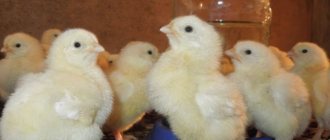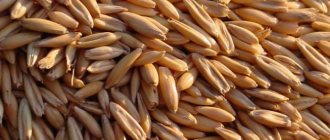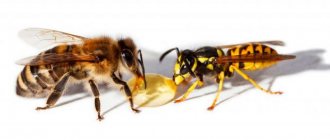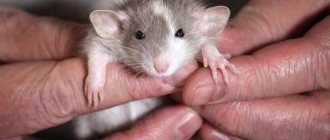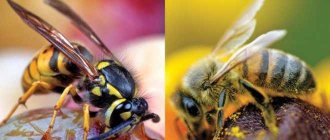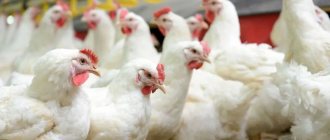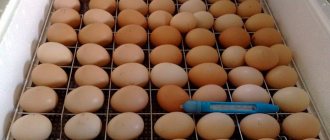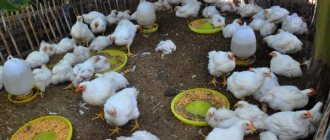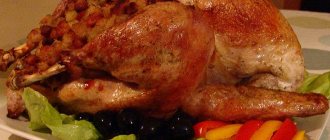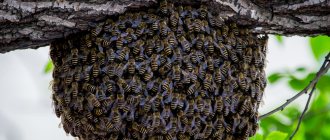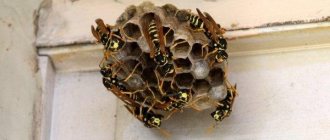Home » Articles about chickens » Cobb chickens 700
Cobb 700 chickens can be released for slaughter as early as 1.5 months. Feed conversion when grown on private farms and poultry farms is low, with an average consumption of 1.8-2 kg. This cross is a more productive version of the Cobb 500. It is characterized by fast growth rates and high quality meat.
History of appearance and external features
Cobb broilers are one of the most popular chicken hybrids due to their high productivity and accelerated growth rates.
The Cobb 700 is an improved Cobb 500. It was created by crossing the Plymouth Rock, Rhode Island and New Hampshire breeds. The features of the first two types of chickens are described in the articles: “Description of the Plymouth Rock Chicken Breed” and “About the Rhode Island Chicken Breed.”
The selection turned out to be successful, and the new hybrid soon won recognition among farmers, as it outperformed its predecessors in several respects.
Cobb 700 chickens have a large carcass, a massive chest, a long neck, and a short curved tail. The wings are pressed tightly to the body and are very small compared to the body. There are no feathers on the large paws. Chickens have a slightly curved beak, yellow eyes and scarlet skin around the eyes.
Chicks are born yellow, but as they grow older their feathers become snow-white. If there is even one speck of a different color on the feathers, the chicken is discarded.
History of origin
Cobb 700 cross broilers are a hybrid breed resulting from crossing chickens that are similar in genetic code.
By crossing Rhode Island, New Hampshire, Plymouth Rock, Cornish and Kuchin Jubilee birds, workers obtained a unique breed. They also bred Cobb 500 and Cobb Sasso.
Culling chicks with deviations in appearance led to the emergence of the purest breed. It is bred not only in Europe, but also in Russia. Like every hybrid, the Cobbs have always had difficulty coping with procreation.
Productivity indicators
The main advantage of Cobb 700 chickens is high productivity. At 1.5 months, the chicken weighs 1.5 kg, at 2.5 months - up to 4 kg, and then the weekly increase reaches 80 g. The indicators of roosters differ by 0.5-1 kg.
Thus, a broiler can be slaughtered as early as 1.5 months. Unlike the Cobb 500, which also quickly gains weight, the Cobb 700 has a more massive carcass. This is described in the article “Description of the Cobb 500 broiler.”
Chickens lay eggs from 6 months, and the weight of the egg depends on the weight of the carcass. The first eggs weigh no more than 60 g, and in a nine-month-old hen this figure increases to 70 g. Egg production is maintained for two years.
These are meat chickens, so you shouldn’t expect high performance. However, some hybrid breeds have good egg production. Read more in the article: “About broiler chickens: what they are and which ones are better.”
Reviews
According to farmers, the main advantages of the breed include:
- heavy weight;
- pleasant-tasting meat;
- rapid development of young animals;
- high percentage of chick survival;
- can be grown at home;
- undemanding to care.
The main disadvantage of cross-breeding is the need to purchase eggs for breeding.
Incubation of eggs and hatching of chicks
Cobb 700 does not reproduce, so there is no guarantee that the chicks will be as highly productive. To breed chickens, farmers buy eggs from poultry farms and put them in an incubator.
It is useless to lay eggs under a laying hen. As a result of selective breeding, chickens have lost their maternal instinct, so they will not hatch and care for their offspring.
Experienced breeders purchase eggs only from certified producers. They have passed all stages of quality confirmation, which is confirmed by the corresponding seal on the shell.
Harmful bacteria can penetrate the shell, so eggs must be disinfected in a solution of iodine or potassium permanganate. They are placed horizontally in the incubator, but before that they must be heated to 25 degrees.
The hatched chicks are given time to dry and then collected. Relocating young animals from the incubator should take no more than half an hour, because it is a lot of stress for them. If the chicks are nervous for a long time, they may get sick.
The chicks are observed for the first few days to identify unhealthy chicks that are not suitable for further development.
Diseases and their treatment
Broilers are susceptible to the same diseases as other types of chickens: pasteurellosis, colibacillosis, mycoplasmosis, etc. Daily inspection of the livestock helps to identify sick individuals.
Sick chickens have:
- lethargy;
- a sharp change in mood from apathetic to excited and vice versa;
- mucous discharge;
- inflammation around the eyes or respiratory system;
- deterioration of plumage;
- indigestion.
Broilers are most often susceptible to the diseases described in the table:
| Disease | Characteristic signs and treatment |
| Dyspepsia | A disease of young animals that occurs due to mistakes by the breeder when preparing the diet. The disease manifests itself as whitish diarrhea with particles of undigested food. Therapy consists of adjusting nutrition. |
| Bronchopneumonia | Develops due to poor conditions: cold combined with dampness. When the bird is sick, it is difficult to breathe, its beak is open, and wheezing is heard. It is impossible to cure the disease on your own. The doctor prescribes the medications and dosage. Usually this is Penicillin, Terramycin. |
| Aspergillosis | The causative agent is a fungus. Infection occurs by airborne droplets. The sick individual has rapid breathing and a depressed state. She is stunted. Phases of the disease: chronic, acute. In the latter case, the disease can cause the death of the entire livestock. Iodine and antifungal antibiotics are used to treat the disease. The dosage is determined by the veterinarian. |
| Salmonellosis | In the early stages it is asymptomatic. A sick bird is characterized by loss of feathers, general weakness, and difficulty breathing. In general, the condition remains satisfactory. Gradually, the bird’s paws swell, coordination is impaired, and severe symptoms of the disease appear, leading to death. For treatment, the veterinarian prescribes Gentamicin, Baytril, and Levomycetin. |
If one of the symptoms is present, you must immediately isolate the sick individual and call a veterinarian.
Rules for feeding chickens
This breed of chicken is unpretentious to food, so it is profitable to keep them on a farm. But if broilers are raised for sale, you will have to follow the correct diet.
It is recommended to feed only balanced industrial feeds containing all the necessary vitamins and minerals.
Babies are fed frequently so that their bodies become accustomed to the volume of food.
For the first 2 weeks, babies are fed 8 times a day with starter feed. From 2 to 3.5 weeks, chickens are given growth feed 5 times a day. Then they are transferred to finishing feeding.
Cobb broilers 700 are difficult to raise without industrial feed, because you have to independently calculate calories, the amount of microelements and vitamins in each serving. Otherwise, the chicken will not gain the required mass.
The menu also includes cottage cheese, greens, crushed grain, premixes, and chalk powder. If the chickens are steadily gaining weight, it means that feeding is going well.
Chickens should always have access to water, otherwise problems with their health will begin. The maximum period without drinking is 6 hours. The drinking bowl is regularly filled with fresh chilled water.
All containers are disinfected, otherwise intestinal infectious diseases cannot be excluded, which reduce growth and productivity.
Does the bird need a walk?
The practice of experienced poultry farmers shows that you can do without it. In any case, there should be no more than ten birds per square floor in the house. How to determine the required number of cells? It is calculated taking into account the weight per 1 square meter. cellular equipment – approximately 40 kg.
It is a mistake to believe that birds that are resistant to external stress factors and pathogens show enviable productivity in a drafty poultry house. For constant air exchange, the chicken coop is equipped with supply and exhaust ventilation.
The larger the population, the more important it is. Air that is not renewed is saturated with harmful gases, including ammonia, which causes burns on the mucous membranes.
If you plan to build a new poultry house, an elevated area with a slight slope and low groundwater is allocated for it. The priority is to place it as protected as possible from the prevailing winds.
On the southern wall of the room, it is advisable to provide several windows that can be opened and protected from predators by a mesh. This design solution is necessary for ventilating the poultry house and simplifies maintaining the light regime at the proper level, which can be found here. In winter, the standard duration of lighting is maintained using artificial light sources, for example, 75-watt incandescent lamps.
Traditional types of bedding material: straw, hay, sawdust and wood shavings. Peat, contrary to popular belief, is not an option, as it serves as a source of organic and other dust.
It is easier to maintain an optimal microclimate in a poultry house when using bacterial litter - a material with an association of beneficial microbes that convert organic matter into physiological heat. Such material inhibits the development of pathogens and improves the sanitary condition of the poultry house.
Raising young animals
Often farmers prefer to buy ten-day-old chicks rather than raise them in an incubator. During the first 1.5 weeks of life, babies are very vulnerable, and the slightest violation of the rules of care can lead to their death. The breeder will have to constantly monitor the temperature in the room with the chicks.
For the first 7 days it is kept at 33 degrees Celsius, then every week it is reduced by 3-5 degrees. A month after hatching, the chicks are kept at a temperature of 20 degrees.
In addition to heat, the room should be light around the clock. For these purposes, additional lamps are installed to illuminate and warm the chickens.
If there is not enough light, babies will not eat well and their bodies will not receive the nutrients they need to thrive. The lighting time is also reduced gradually. By the end of the month, there should be no more than 15 hours of light a day in the poultry house.
Incubation
Eggs for hatching broilers are purchased from poultry farms; they must be stamped. After hatching and up to a week of age, the chicks are kept in special brooders in which light and temperature conditions are maintained.
Table of temperature and humidity modes
| Period |
